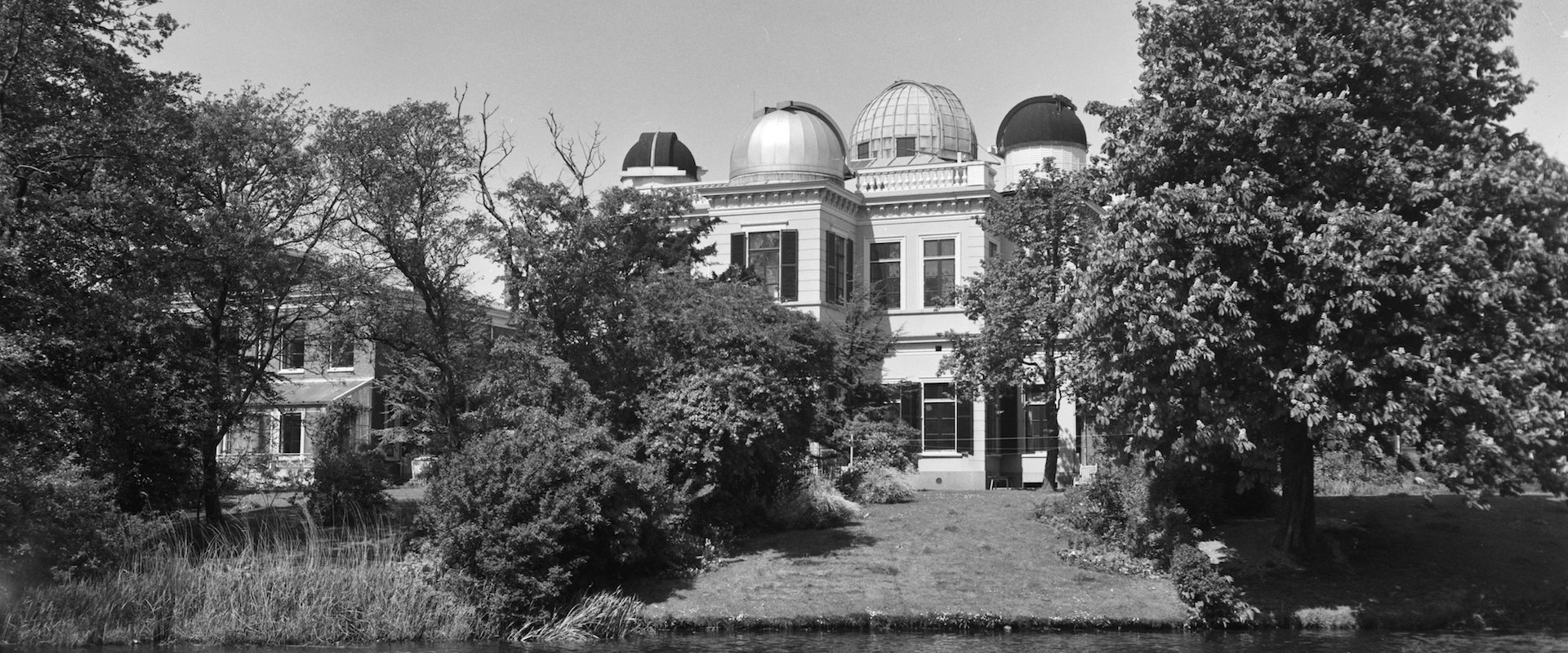History
The Old Observatory has a rich history. On this page you will find a short version of the history that took place in the observatory.
Leiden University is the oldest university in the Netherlands, founded in 1575. Astronomy has a long and rich tradition in Leiden. As early as 1633, the university received an observatory as a shelter for the Quadrant of Snellius. It makes the Leiden Observatory the oldest remaining university observatory in the world.
In the first two centuries the observatory was mainly used for educational purposes. In 1861, under the leadership of Frederik Kaiser, the 'new' observatory was built on the Witte Singel, marking the beginning of a massive boom for Dutch astronomy. At the end of the 19th and early 20th centuries, Leiden developed into a world-class scientific centre with famous physicists such as P. Ehrenfest and the Nobel prize winners Lorentz, Zeeman, and Kamerlingh Onnes. In 1919 Willem de Sitter became director of the Observatory. He worked with Albert Einstein on the implications of the general theory of relativity in the field of cosmology. His successor was Ejnar Hertzsprung, the co-inventor of the famous Hertzsprung-Russel diagram of stars that is still used in astronomy today.
Jan Hendrik Oort
In 1924 De Sitter made sure that Jan Hendrik Oort came to Leiden, who would become the most famous Leiden astronomer. Oort was director from 1945 to 1970 and remained active in the Observatory until his death at the age of 92. Few astronomers in the world have made such an important contribution to so many different subjects. Oort worked on the movement of stars and discovered the rotation of our galaxy. He has proven the existence of the 'Oort cloud', a large family of comets far away from the sun, and has also done important work on clusters of galaxies and the large-scale structure of the universe. He also told H. C. van der Hulst in 1944 to calculate precisely whether neutral hydrogen, the most common gas in the universe, could radiate linear radiation. This was found to be the case on the 21 cm radio wavelength. This was the start of a whole new field of research that can measure this line radiation, and with it the hydrogen gas, far into the universe. Thanks to Oort, the Netherlands has always played a prominent role in this; from the Dwingeloo Radiotelescope and the Westerbork Synthesis Radio Telescope (both at one point the largest radio-telescope ever in the world), to the current LOFAR - a network of thousands of sensors stretched out across Europe, the heart of which lies in the Netherlands.

Leiden Astronomers in the Rest of the World
Over the course of the 20th century it became clear that urban observatories were no longer sufficient for state-of-the-art observations. For decades, the Leiden Observatory has therefore had an observatory in South Africa. In 1962, the European Southern Observatory (ESO) was founded, partly thanks to Oort and the first ESO director and Leiden professor A. Blaauw. Since its establishment, more than half of the time ESO has had a Leiden professor in power with Blaauw, Woltjer and Van der Laan and the current director De Zeeuw. It has become the most important astronomical observatory in the world, with the Very Large Telescope (VLT) and a large share in the Atacama Large Millimeter Array (ALMA).

Since the end of the 1970s, the astronomers, and hence the scientific institute Leiden Observatory, have no longer been housed in the monumental building on the White Singel, but in the Jan-Hendrik Oortgebouw and the Huygen Laboratory on the Wassenaarseweg. Until 2006, the Biology department made use of the Old Observatory, over which period the complex became seriously dilapidated. In the period 2008-2012, however, the observatory was thoroughly renovated and restored to its former glory.

